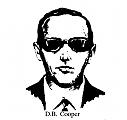Almost six years after the worst attack ever on U.S. soil, special operations commanders believe that simply killing terrorists will not win a war against an ideologically motivated enemy.
That view is reflected in a series of transitions in special operations leadership posts. New senior officers are expected to give greater weight to an indirect approach to warfare, a slow and disciplined process that calls for supporting groups or nations willing to back U.S. interests.
Former Defense Secretary Donald H. Rumsfeld turned special operations forces into a “giant killing machine,” said Douglas Macgregor, a former Army colonel and frequent critic of the Defense Department.
Now, with Rumsfeld gone and Navy Vice Adm. Eric Olson about to take control of U.S. Special Operations Command (SOCOM), Macgregor anticipates a return to the fundamentals drilled into Army Green Berets, Navy SEALs and other specially trained troops.
“The emphasis will be on, ‘If you have to kill someone, then for God’s sakes, kill the right people,”’ Macgregor said. “In most cases, you’re not going to have to kill people and that’s the great virtue of special operations. That’s been lost over the last several years.”...














Bookmarks